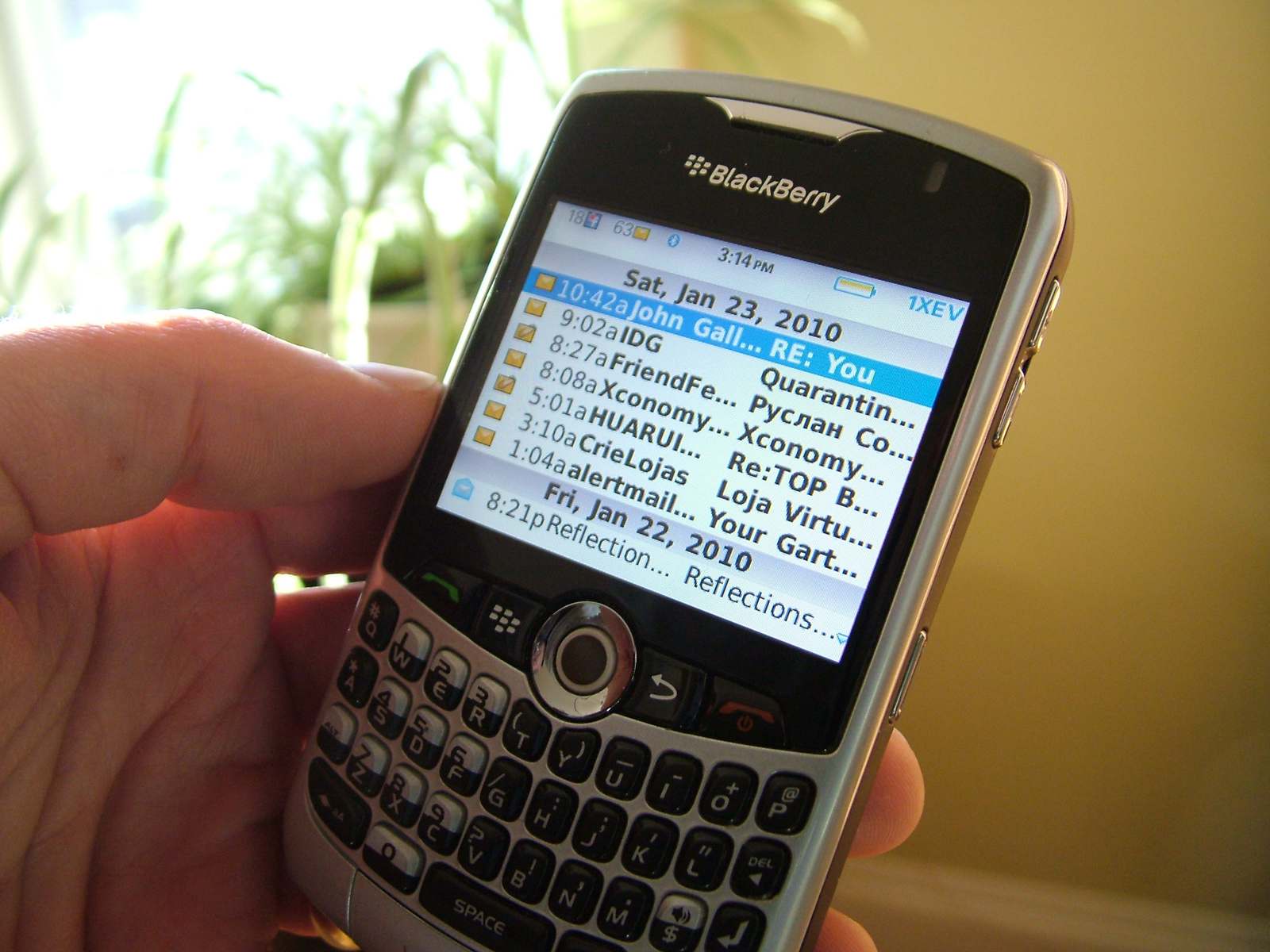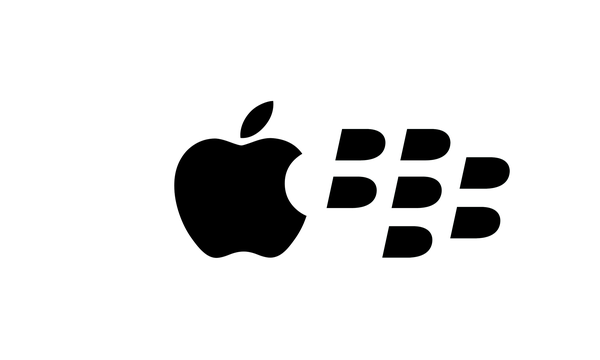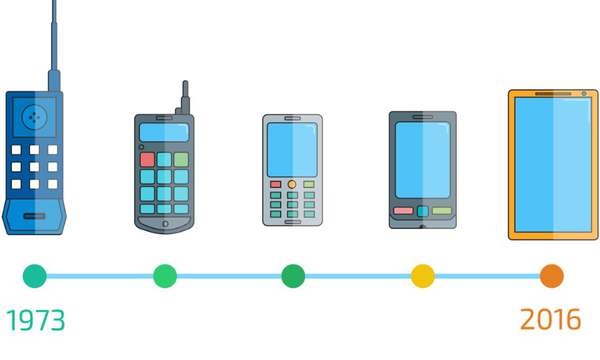
Apple 15 / BlackBerry Off
By coincidence, the iPod’s 15th anniversary came a few days after BlackBerry turned off its services – the BlackBerry was north America’s biggest selling smartphone when the iPhone was launched. BlackBerry had ceased to make handsets a few years previously.
Comparing the fortunes of the two companies reveals how incumbents innovate, and how they react to other people’s innovations. One of them, Research in Motion Ltd (RIM - which became BlackBerry in 2013), had worked within the industry for a decade before launching its first phone, pushing the boundaries of what was capable from the inside. The other, Apple Computer, launched its assault from outside the citadel walls.
But both Apple and RIM had something in common – a very clear idea that the user should come first. Both visions took a lot of work to turn into reality.

“Users first!” - this customer-centric mantra is repeated in every marketing department in the world. But for a few years the mobile telecoms industry, basking in phenomenal growth, seemed to neglect the imperative. Both BlackBerry and then Apple were successes resented by the industry for their demands (and the fees they charged). But each in their own way broke through some of the industry’s stubbornness in fulfilling the networks’ potential.
There’s a neat symmetry to the timings, too. RIM’s long learning curve in mobile began 15 years before the iPhone launch, in 1992. RIM was then a small contract component and software manufacturer with under two dozen employees when mobile came calling in the shape of the Mobitex wireless data network. RIM developed various data products for Mobitex over the next decade, including a developer kit and an email gateway, and in 1995 moved from bits to radio expertise with its first modem. The following year, RIM released its first self-contained, own-brand hardware product, a $600 pager the Inter@active 900. Even from the outset, RIM was extending the capability of the network. The 900 could do two-way paging, handle faxes and also internet email.
Now let’s turn to the day the smartphone wars began, as many of us remember it - one sunny day in June 1998 at a hastily assembled press conference in a hotel on Marylebone Road. The media had received a fax with a couple of hours’ notice. This was the formation of Symbian and was where the device world should have become a platform world. Many of us assumed Symbian was the platform that would prevail, on which we’d use new and as-yet undreamed-of mobile services and applications. At least we thought so in Europe, anyway. Symbian wasn’t just a reaction, a stop-Microsoft move, but a collaborative venture between the biggest in the industry: Nokia, Ericsson and Motorola. These top three handset makers of the time were the founding partners, with more to follow.
What then followed was (no pun intended) a phoney war lasting several years in which no devices appeared, but Microsoft and Symbian (and to a lesser extent Palm) jostled for mindshare in the media and at industry events. It was all promise, and the promise was enormous. New devices would handle mobile communications, document sharing and services such as mapping and personal networking. These devices would be phones, communicators and what Symbian called “WIDs” or wireless information devices – small tablets resembling the smartphones we use today. All would be powerful, converged devices.
But it was a promise that wasn’t fulfilled. Symbian in 2000 suggested that 100 million smart devices would sell in 2003-04. The prediction fell short by 80 million. In fact, Symbian had been forced to abandon its original model in little over three years and has since become a lesson in why consortia fail when pulled in different directions. Its fourth founding member was Psion, whose idea Symbian was and whose diplomacy made it happen. Psion had experience of developing a third party ecosystem for its handheld phones, but no experience of mobile phone interfaces. That suited Nokia and Ericsson in 1998, but not in late 2001 when the venture fragmented. Nokia and Ericsson relegated Psion and took charge of developing their own UIs for their own devices.
Both also licensed each UI to third parties. It meant one API fragmenting into four. A fifth was developed which could impersonate at least two of the others codenamed Hildon, or Series 90. Symbian was formally demoted to developing common lower level functionality such as the kernel and the frameworks, but not the UI. Symbian’s fragmentation hurt it badly in North America as it became an impossible sell to CIOs in enterprises. Not only did Symbian have a steep learning curve, but software developers couldn’t “write once, run anywhere” - even on Symbian.
Two important things happened while smartphones stagnated. With sales low in 1998, feature phones became more capable than anyone had expected. The Nokia 6230i of 2005 ran instant messaging, internet email and purportedly BlackBerry email too. But this “inferior” technology offered a superior user experience in some ways; it was faster and lighter and batteries lasted many more days. High-end Symbian phones became differentiated by their cameras – few were doing multitasking, and the app ecosystem was a mess.
RIM progressed through the 1990s, quietly acquiring some vital know-how on the job: network expertise and data centre experience. The first ‘BlackBerry’ in 1999 was the BlackBerry 850 which was a capable successor to the Pager, designed for corporate and internet email. The following year its successor could make voice calls. Like a duck, a lot was going on out of sight. To deliver email well required proxy servers at the mobile operator, to provide a proxy server. The 2G mobile networks couldn’t easily handle the much larger data volumes of email generated by Exchange and Lotus Notes. A proxy network managed the data volumes very well, and RIM knew the capabilities of the terminal at the end of the connection, as it had designed it. It was a slow start: BT ordered 100,000 for its UK launch in 2001, but most went unsold. Then the BlackBerry 850 became a word-of-mouth hit, so addictive it earned the ‘Crackberry’ nickname.
None of the incumbents could offer a package remotely as convenient to either executives or the workforce. With strong customer demand, RIM could even charge the operators a SAF or ‘service access fee’ for hosting the proxy servers. Today, content delivery networks are commonplace but the charging works the other way around. As in many markets, you have to pay for distribution, or pay to be seen. Apple would be in a similar position of setting the terms a few years later.
In fact, this was the other remarkable thing about the first few years of smartphones - the convergence everyone expected didn’t happen. This lacuna, and the absence of compelling devices, left an opportunity for others to fill. Users carried more than one thing in their pockets. BlackBerry became a hit ‘second device’ devoted to messaging – a genuine communicator. From 2003-04 onwards, the iPod became a second gadget that many people carried too. Or a third, if they had a BlackBerry. But neither BlackBerry nor the Symbian shareholders – the giants of the 1990s - would be able to turn first mover advantage into lasting success.

By the middle of the 2000s, the great promise of mobile services which we’d heard about for so long simply wasn’t being fulfilled on any platform. I lamented in 2006, six months before Apple entered the market, that 'smartphones' were simply heavier featurephones and that featurephones still didn’t do very much:
“Lacking a killer application, smartphones have succeeded more because they’re a status symbol, than for practical reasons. Even for the most reliable smartphones, there are serious disadvantages – such as a time taken to open a text message, and having only a half to a quarter of the battery life of a dumbphone. That’s for the good ones. In markets where Palm and Microsoft models are popular, they don’t even have the reputation for reliability.”
The mobile incumbents regarded Apple’s entry in January 2007 as arrogant and much too late. In fact, with the benefit of hindsight, the timing was perfect. The killer app turned out to be social media (as well as “the app” of course), but these services needed years to catch on and mature on the desktop first. Similarly the data networks capable of handling the rich media that people slung around social media sites didn’t really arrive until HDSPA+ and then LTE in around 2012/3. That gave Apple plenty of time to learn the ropes.
One irony is that Apple didn’t plan to make a phone at all when it acquired the multitouch technology that made the iPhone so compelling and different – the industry largely created the vacuum and gave an outsider that opportunity. Entire business sectors, from banking to sports to entertainment, had been sold the vision of mobile years earlier by Microsoft and Symbian but were fed up with waiting. Meanwhile Steve Jobs had been looking for technology that would make a quantum leap in how people interact with applications and services and had found it. Direct manipulation of the screen using your fingers is intuitive, tactile and immediate, and permits a very simple interface that doesn’t require a manual. This then enables a truly mass market for those services. You don’t need a manual for any iPhone app today.
So, if stagnation created the opportunity for Apple, what created the stagnation? One answer may lie in the web of economic relationships between the incumbents. Nokia and Ericsson were major equipment sellers to the mobile networks. They were also customers of those networks. While some Chinese walls existed, it was all rather cosy and insular. Networks drew up stringent demands to which handset makers had to conform, but these often included irrelevant services the networks wanted to promote, like MMS which nobody used. (The operators’ pricing ensured that).
One of my favourite anecdotes after the iPhone launched came from a member of the Nokia team who had been asked to perform a technical analysis of the user interface. The team hired high speed movie cameras to film the iPhone in action. The footage confirmed that the animations were running at 60 frames per second. An expensive GPU had been built into the iPhone solely to handle these smoothly. And in a technical miracle, the system (a full Unix implementation) featured a graphical compositor, itself a hugely resource-hungry piece of software.
No smartphone maker would have contemplated building in such features. Even if they wanted to, they wouldn’t have been allowed to. The economic conventions dictated that the bill of materials must be kept low. But Steve Jobs put the user first. He wanted a new kind of device in the pocket, one that felt completely different, almost a device from another planet. The expensive graphics created an interface that was tactile and responsive, with the physics of an everyday object, for example a list had to bounce when you scrolled to the end – and bounce at 60fps. Sceptics that the iPhone could live up to its hype - and I was one - only needed to spend time with it. I reckon within 30 seconds to a minute almost everyone knew the rules had just changed and consumers would demand something like it. The result was that Apple didn’t really have to market the iPhone, just tell people where to buy one.
And in many ways the iPhone broke the rules of what the networks permitted. But, like the BlackBerry, once the consumer screamed for it, the networks had no option but to yield. No one buying an iPhone really cared that MMS was missing.

After the iPhone became a smash, it was evident the consumer wouldn’t settle for less. The consumer now set the standard for their user experience, not the operator or anyone else. Google was the quickest to react and create a competitive alternative, rapidly adding a graphics compositor to Android backed up by hefty hardware. Google also charged a fee that manufacturers liked: zero. Nokia’s bureaucratic in-fighting and consensus culture and RIM’s obstinacy meant they only produced competitive platforms much later. For Nokia this was in the form of Meego in 2009, which was abandoned, and for BlackBerry it was as late as January 2013 before it could replicate the tactile iPhone experience. It was far too late.
The mobile industry had done many things well and done them conscientiously. It still does. But in the wider context of other industries wanting to tap into the enormous potential of mobile data – to drive efficiency, for example, or gain more customers - the networks weren’t working for them.
The operators in 2007 can be likened to a bridge whose owners policies and tariffs dictated what was being built on each side of their bridge. The operators didn’t own the land on either side of the bridge, but what they allowed over the bridge dictated what how that land was developed - or not developed. And this conservatism presented an obstacle for other industries wanting to harness mobile networks. Compared to today, the mobile services and applications markets were a wasteland.
The industry had put itself at the centre of the universe, not other people’s services or the consumer. As Aristotle says in his Politics – the judge of the meal should be the diner.
1The final design to run BB10 was the BlackBerry Passport (September 2014), tweaked for the BlackBerry Passport SE (August 2015). Subsequently BlackBerry licensed the rights and an Android suite to other manufacturers – the most recent was the BlackBerry Key2 Lite (2018).










